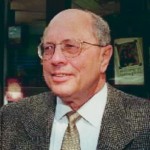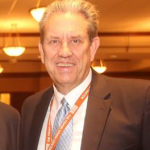The following article was originally published by Wenger Corporation on its performing arts blog.
Over three weeks we’re examining security in performing arts centers from different angles: operations, planning and training. Last week we focused on the AT&T Performing Arts Center in Dallas. This week we consider planning from the perspectives of a theatre consultant and a security expert.
“I think stadiums, arenas and other large concert or sporting venues are addressing security very well, in every manner they can,” explains Jack Hagler, ASTC, a partner in Schuler Shook’s Dallas office. Schuler Shook’s core practices are theatre planning and architectural lighting design.
Common security measures at stadiums and arenas include keeping vehicular traffic away from pedestrian areas, proactively searching for bombs or other weapons – either in vehicles or on people – and even employing metal detectors to screen audience members upon entry.
But why aren’t many PACs employing such measures? Hagler believes the paradigm is different. A popular music concert or sporting event in an arena typically attracts a younger audience; those events have an unfiltered, high-energy feel.
“Performing arts facilities attract a different crowd – even with popular music or a Broadway show,” explains Hagler. “We expect a more formal, refined type of audience.”
He believes it’s difficult for a PAC operator to insist their well-dressed patrons, perhaps fresh from pre-show fine dining, pass through metal detectors and have their belongings searched.
Looking ahead, Hagler expects to see increased security awareness in PAC planning. When contacted recently, Hagler said it’s the sixth design trend he would add, building on the five already cited in his interesting 2015 article.
Realizing Possibilities
“Many in the U.S. haven’t yet realized the possibility of terrorism impacting a performing arts center,” contends Hagler. For example, while patron bag searches are discussed, such policies vary widely, both by specific venue and type of entertainment.
He hopes the U.S. never witnesses large-scale attacks like happened in Paris and Moscow in 2015 and 2002, respectively. At the Bataclan theatre massacre in November 2015, 90 audience members at a heavy metal band concert were killed by terrorists.
In the Moscow incident 13 years earlier, Chechen rebels took more than 700 opera patrons hostage in the Dubrovka Theater for over two days, demanding Chechnya’s independence. By the time Russian special forces ended the siege, most of the rebels and 120 hostages had been killed, many by the effects of an unidentified narcotic gas pumped into the building to subdue the attackers.
While it’s impossible to eliminate all risks, proper planning in a PAC’s design stage can help mitigate these dangers.
Secret Playbook
“Performing arts centers being designed today must consider not only the guest-service experience, but how their facility’s design enhances safety and security,” explains Mark Herrera, IAVM Director of Education. A former S.W.A.T. leader and Department of Homeland Security advisor, he leads the association’s education and outreach efforts.
Just because the public is unaware of security plans and design features at PACs doesn’t necessarily mean those plans and features don’t exist. One important element is known as Crime Prevention through Environmental Design.
“We never want to give the threat our playbook,” notes Herrera. He advises architects and facility planners to design structures with crime prevention in mind and to create environments that positively impact human behavior.
One key design factor is natural access control points for patrons to enter and exit the facility, without it resembling a foreboding structure like Fort Knox. Herrera says that even buildings constructed 15 or 20 years ago can take retrofit steps through environmental design, such as adding decorative planters or benches that enhance aesthetics while also preventing a vehicle breach.
A second key design factor is natural surveillance opportunities for staff and security personnel, including outside law enforcement. This ensures that large crowds can be easily monitored by staff, yet the same crowd is safely inside a perimeter and shielded from potentially harmful surveillance or dangerous violence.
Proper Preparation
More than any specific architectural feature, Herrera believes security in performing arts centers starts with education. “We’re being very proactive with these facilities to ensure they receive the best training and information on mitigating risks,” he says.
Herrera has been asked if it’s possible to over-train on security, which might send a message that a facility has problems or issues that need attention. He strongly disagrees.
“When you train your personnel, you’re programming the subconscious part of the mind to make the unknown familiar – like storing information in a database, always available for recall,” explains Herrera.
When the mind is conditioned to notice unusual activity and given a plan of action, the proper response objective is carried out instinctively and without hesitation.
He also compares the repetition of training to shaking someone else’s hand. “You don’t have to aim or guide your hand, or even think about it – you just shake it like you’ve done thousands of times before,” Herrera adds. “Training needs to be like this, both instinctive and automatic.”
Herrera considers training like an “environmental inoculation” – analogous to a flu shot providing immunity to influenza. He concludes, “Training gives small doses of the ‘disease’ that helps strengthen immunity against various adverse conditions.”
The post Security In PACs: A Different Paradigm (Part 2 of 3) appeared first on International Association of Venue Managers.

 is unique and special to those who have spent many a June in West Virginia. Formerly the Public Assembly Facility Management School, these last 30 years have seen incredible growth and change in the industry that the school has been on the cutting edge of every year for the students who gather.
is unique and special to those who have spent many a June in West Virginia. Formerly the Public Assembly Facility Management School, these last 30 years have seen incredible growth and change in the industry that the school has been on the cutting edge of every year for the students who gather. Do you work at a venue that encourages staff to attend the school to enhance their professional development and to one day carry the powerful CFE designation at the end of their name? We’re all ears.
Do you work at a venue that encourages staff to attend the school to enhance their professional development and to one day carry the powerful CFE designation at the end of their name? We’re all ears. sponsors to thank in Aventura Catering, Sico Seating and Ticketforce.”
sponsors to thank in Aventura Catering, Sico Seating and Ticketforce.” the industry veteran. Topics and speakers will include:
the industry veteran. Topics and speakers will include: hard and because I love what I do.”
hard and because I love what I do.” said. “All of our venues are outdoor spaces. We have become more proactive in terms of how we are preparing for unfortunate situations should they happen.”
said. “All of our venues are outdoor spaces. We have become more proactive in terms of how we are preparing for unfortunate situations should they happen.” “We invited Mark to join our executives,” Yazowski said. “It was a wonderful experience and really just the tip of the iceberg. The training was set to get everyone’s minds thinking in a circular way. We are now working with Mark and IAVM to develop onsite training for all our venues so that he is not only working with executive leadership but also with those on the front line … the staff, production crew, volunteers and others.”
“We invited Mark to join our executives,” Yazowski said. “It was a wonderful experience and really just the tip of the iceberg. The training was set to get everyone’s minds thinking in a circular way. We are now working with Mark and IAVM to develop onsite training for all our venues so that he is not only working with executive leadership but also with those on the front line … the staff, production crew, volunteers and others.” countless hours focusing on how to put our venue in a positive light for our guests, the NFL, and to teams/leagues around the world, not only while they are here in our venues, but every day.
countless hours focusing on how to put our venue in a positive light for our guests, the NFL, and to teams/leagues around the world, not only while they are here in our venues, but every day.  When IAVM Junior Designer Jamie Carney submitted an entry into Association Trends Magazine’s Salute to Excellence Awards in the category of Daily or Weekly Communication for her work in the creative of the redesign of the IAVM News newsletter, she did so with the confidence that there could be a pot of gold at the end of the rainbow once the winners were selected in Washington, D.C. last Thursday.
When IAVM Junior Designer Jamie Carney submitted an entry into Association Trends Magazine’s Salute to Excellence Awards in the category of Daily or Weekly Communication for her work in the creative of the redesign of the IAVM News newsletter, she did so with the confidence that there could be a pot of gold at the end of the rainbow once the winners were selected in Washington, D.C. last Thursday.
 The International Association of Venue Managers has named Amy Fitzpatrick as the organization’s new Director of Marketing. Amy joined the team on February 27, 2017. She was previously the Graduate Program Coordinator for the School of Kinesiology, Recreation, and Sport at Western Kentucky University, where six years ago she helped to develop a partnership between WKU and IAVM.
The International Association of Venue Managers has named Amy Fitzpatrick as the organization’s new Director of Marketing. Amy joined the team on February 27, 2017. She was previously the Graduate Program Coordinator for the School of Kinesiology, Recreation, and Sport at Western Kentucky University, where six years ago she helped to develop a partnership between WKU and IAVM.  For every naysayer who forecasts the demise of live entertainment due to the 24/7 presence of social media and other convenient distractions, Peter Sagal, NPR host and keynote speaker at the Performing Arts Managers Conference, says to tap the brakes on all the negativity.
For every naysayer who forecasts the demise of live entertainment due to the 24/7 presence of social media and other convenient distractions, Peter Sagal, NPR host and keynote speaker at the Performing Arts Managers Conference, says to tap the brakes on all the negativity. maybe 75 people,” Williams said. “We were calling people … are you coming? Will you be on a panel? I had quit smoking and went outside in front of the Chicago Theatre and bummed a cigarette, I was so stressed.”
maybe 75 people,” Williams said. “We were calling people … are you coming? Will you be on a panel? I had quit smoking and went outside in front of the Chicago Theatre and bummed a cigarette, I was so stressed.” IAVM Director of Development Meredith Merritt praised the sector for making donations possible for five individuals to receive 2017 Joseph A. Floreano Scholarships + Internship Programs. She thanked Ungerboeck Software, WJHW, and Adrian Smith + Gordon Gill Architects for their generous donations toward the scholarships.
IAVM Director of Development Meredith Merritt praised the sector for making donations possible for five individuals to receive 2017 Joseph A. Floreano Scholarships + Internship Programs. She thanked Ungerboeck Software, WJHW, and Adrian Smith + Gordon Gill Architects for their generous donations toward the scholarships. Vandenberg, chair of the Board of Governors for the symposium. “I knew at that point that if VMS served as an undergraduate degree, then GI served as a graduate degree in my mind and SES had to be the PhD for the industry.”
Vandenberg, chair of the Board of Governors for the symposium. “I knew at that point that if VMS served as an undergraduate degree, then GI served as a graduate degree in my mind and SES had to be the PhD for the industry.” “SES was such an excellent program I actually attended three times,” he said. “The first three years were so great that I worked hard to get on the Board of Governors so I could come back and go through the program again a few years later. Thanks to some term length quirks, I was fortunate enough to serve another three years including two years as Chair of the Board of Governors. I’ve always felt it was the best program in IAVM’s arsenal of offerings. There is the Ivy League faculty, incredible setting, intimate classroom environment and time to get away from the day-to-day grind and really THINK. I would, and still do, tell folks they’re missing out on something special if they haven’t been.”’
“SES was such an excellent program I actually attended three times,” he said. “The first three years were so great that I worked hard to get on the Board of Governors so I could come back and go through the program again a few years later. Thanks to some term length quirks, I was fortunate enough to serve another three years including two years as Chair of the Board of Governors. I’ve always felt it was the best program in IAVM’s arsenal of offerings. There is the Ivy League faculty, incredible setting, intimate classroom environment and time to get away from the day-to-day grind and really THINK. I would, and still do, tell folks they’re missing out on something special if they haven’t been.”’ University of Illinois at Urbana-Champaign. He spent nine years at Assembly Hall, working his way up to assistant director and then associate director, before moving to Austin to join the Frank Erwin Center as associate director in May 1989. He was then promoted to director in October 1990.
University of Illinois at Urbana-Champaign. He spent nine years at Assembly Hall, working his way up to assistant director and then associate director, before moving to Austin to join the Frank Erwin Center as associate director in May 1989. He was then promoted to director in October 1990. 
 The American Rodeo), I took a moment for self-reflection. Opening a venue – especially a stadium and one of the magnitude of AT&T Stadium – has been an incredible experience. In those early days we struggled, quickly moving from one event to another without much time to sort things out or plan for the future. Our staff would long for the days when all of the hard-earned experience was behind us and we “settled in” to running the facility. We desperately wanted to master all aspects of event planning and stadium operations and deliver “perfect” experiences to our guests and clients. And through a lot of hard work, experimentation and some measure of luck, we have done pretty well. We are not perfect – and we never will be – but I believe that we are consistently delivering on the promises we have made to ownership, our season ticket holders, our guests who attend the myriad of events, and our event clients. We have been profitable and we have shown that AT&T Stadium is a valuable community asset for the City of Arlington and North Texas.
The American Rodeo), I took a moment for self-reflection. Opening a venue – especially a stadium and one of the magnitude of AT&T Stadium – has been an incredible experience. In those early days we struggled, quickly moving from one event to another without much time to sort things out or plan for the future. Our staff would long for the days when all of the hard-earned experience was behind us and we “settled in” to running the facility. We desperately wanted to master all aspects of event planning and stadium operations and deliver “perfect” experiences to our guests and clients. And through a lot of hard work, experimentation and some measure of luck, we have done pretty well. We are not perfect – and we never will be – but I believe that we are consistently delivering on the promises we have made to ownership, our season ticket holders, our guests who attend the myriad of events, and our event clients. We have been profitable and we have shown that AT&T Stadium is a valuable community asset for the City of Arlington and North Texas. agriculture,” said President and CEO Jason Rittenberry. “Kentucky Venues plays a vital economic role in both the community and the Commonwealth. The rebranding includes the launch of a new name, logo and website, www.kyvenues.com.”
agriculture,” said President and CEO Jason Rittenberry. “Kentucky Venues plays a vital economic role in both the community and the Commonwealth. The rebranding includes the launch of a new name, logo and website, www.kyvenues.com.” 







